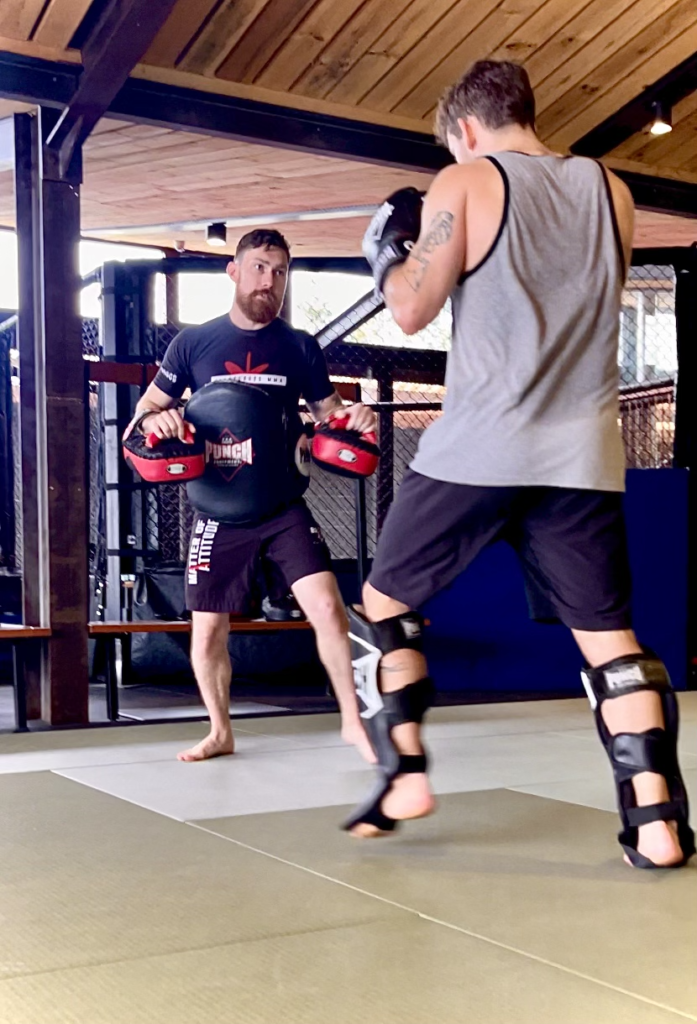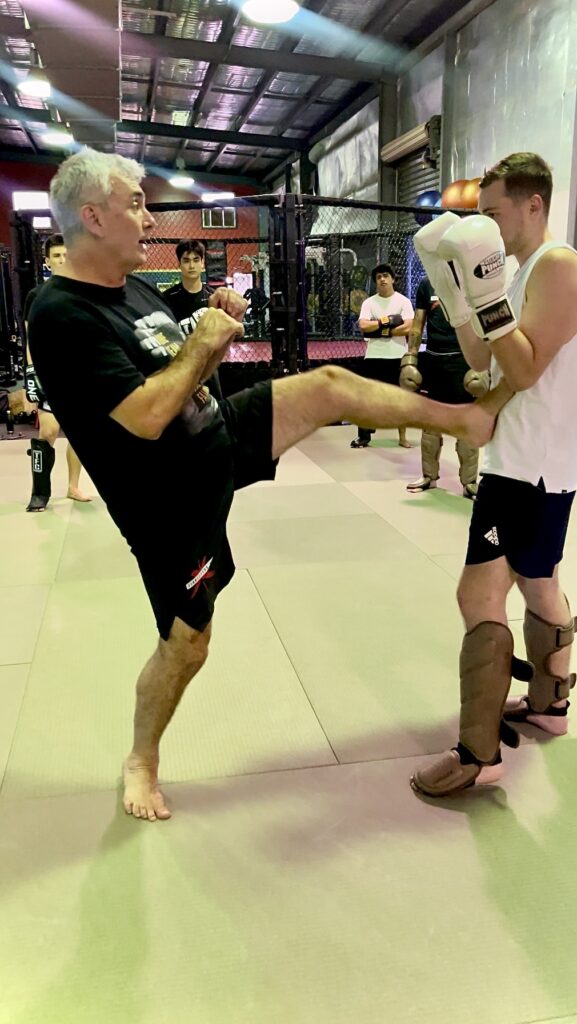level up your kickboxing game and progressing through training levels with the power of structured training methodologies. Kickboxing isn’t just about throwing punches and kicks; it’s about mastering techniques, developing timing, and honing your reflexes. In this blog, we’ll delve into the various levels of kickboxing training, from shadowboxing to live sparring, and explore the significance of each stage in your martial arts journey.

1. **Shadowboxing**:
Shadowboxing serves as the foundational level of kickboxing training. It’s more than just throwing punches at thin air; it’s a focused exercise that helps athletes develop proper form, footwork, and fluidity of movement. Shadowboxing allows practitioners to visualize opponents, practice combinations, and refine their technique without the pressure of external resistance. It’s the perfect opportunity to correct errors, improve balance, and build muscle memory.
2. **Working the Bag**:
Bag work is where the real power starts to develop. Whether it’s a heavy bag, speed bag, or double-end bag, this training level allows athletes to apply their techniques with force and precision. Bag work helps in building strength, endurance, and explosiveness while also enhancing striking accuracy and timing. It’s a crucial stage for developing power in punches, kicks, knees, and elbows, as well as conditioning the body for the physical demands of combat.

3. **Pad Training**:
Pad training introduces the element of interaction with a partner. Whether it’s focus mitts or Thai pads, this level of training simulates real-life scenarios where athletes must react to incoming strikes and counter effectively. Pad work not only improves offensive skills but also enhances defensive maneuvers, head movement, and overall agility. It’s an opportunity for trainers to provide immediate feedback, correct technique, and instill proper timing and rhythm in their athletes.

4. **Dutch Style Live Drills**:
Dutch style live drills take training to the next level by incorporating partner drills with higher intensity and resistance. Derived from the Dutch kickboxing tradition, these drills focus on relentless pressure, combination punching, and seamless transitions between offense and defense. They simulate the fast-paced, aggressive nature of competitive kickboxing bouts, conditioning athletes to perform under pressure while maintaining composure and strategy.
5. **Sparring**:
Sparring embodies the essence of learning and skill development in kickboxing. It’s an interactive classroom where athletes apply their techniques in real-time, honing their abilities through practical experience. Within the structured environment of sparring sessions, athletes have the opportunity to experiment with different strategies, refine their timing, and enhance their defensive maneuvers. Each exchange offers valuable insights into one’s strengths and areas for improvement, fostering a continuous cycle of growth and development. Moreover, sparring cultivates adaptability and problem-solving skills as athletes learn to respond to varying styles and tactics employed by their training partners. It’s not merely a test of physical prowess but a journey of self-discovery, where athletes uncover the nuances of their style and evolve as martial artists with each spar.
Each level of kickboxing training plays a vital role in the development of a well-rounded athlete. From shadowboxing to sparring, each stage builds upon the skills acquired in the previous level, laying a solid foundation for mastery of the art. Progression through these levels not only improves physical attributes but also cultivates mental toughness, discipline, and a deeper understanding of the intricacies of combat sports.
In conclusion, as you embark on your kickboxing journey, embrace each level of training with dedication and focus. Remember that mastery is a gradual process, and progress is measured not only by skill acquisition but also by personal growth. Stay disciplined, stay hungry, and above all, enjoy the journey towards becoming the best version of yourself inside and outside the ring.